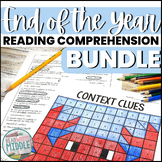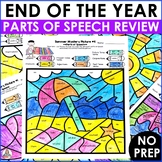28 results
Middle school literature thematic unit plans on sale

8th Grade English ELA Lessons in PowerPoint Slides for FULL YEAR (42 Weeks)
This resource contains a FULL YEAR (42 weeks) of detailed 8th Grade ELA lessons in PowerPoint addressing the following core texts: Homecoming, The Witch of Blackbird Pond, A Single Shard, and The Princess Bride. These lessons for an entire year in PowerPoint are designed to be paired with my resource "8th Grade English ELA Lesson Plan Bundle (Entire Year - 42 Weeks)." These lessons likewise address all of the Grade 8 ELA Common Core standards in ways that promote critical thinking, text-to-world
Grades:
6th - 9th
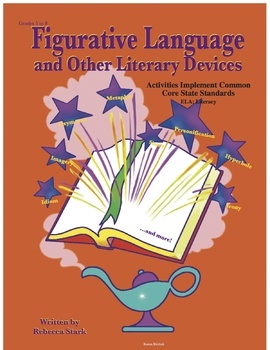
FIGURATIVE LANGUAGE & OTHER LITERARY DEVICES, Grades 5 to 8
Authors use literary techniques to convey meaning and to make the story more interesting to the reader. The understanding of these devices will help students get more enjoyment from the fiction they read—both in and out of the classroom situation. This comprehensive unit uses examples from classic and modern literature to introduce and reinforce literary devices. Figurative Language & Other Literary Devices: Grades 3 to 6 is also available.FORMATEach term is defined. One or more examples ar
Grades:
5th - 9th
Also included in: Middle-Grade ELA Bundle: Grades 5–8

Dear Martin Nic Stone Novel Study Complete Student Packet No Prep Lit Circle
Empower your students to dive deep into the powerful narrative of Nic Stone's acclaimed novel, "Dear Martin," with this comprehensive 20-page packet. Designed with student independence in mind, this resource provides everything they need for a thorough exploration of the text, from pre-reading activities to engaging post-reading reflections.No teacher prep required! This packet is perfect for individual study or for facilitating dynamic literature circles in your classroom. Whether used in class
Subjects:
Grades:
7th - 10th
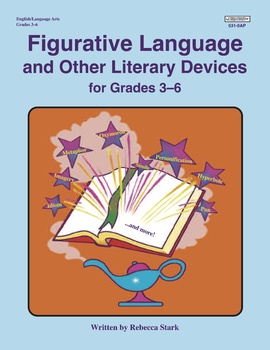
FIGURATIVE LANGUAGE & OTHER LITERARY DEVICES, Grades 3 to 6
Authors use literary techniques to convey meaning and to make the story more interesting to the reader. The understanding of these devices will help students get more enjoyment from the fiction they read—both in and out of the classroom situation. This comprehensive unit uses examples from classic and modern literature to introduce and reinforce literary devices. (Figurative Language & Other Literary Devices is also available for Grades 5 through 8,)Each term is defined. One or more example
Grades:
3rd - 6th
Also included in: ELA Bundle for Grades 3 to 6
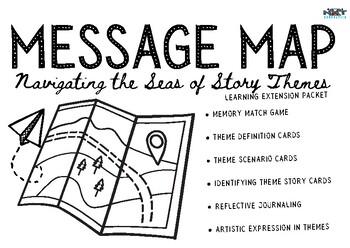
Message Map: Navigating the Story Seas Learning Extension Packet!
NEW RELEASE! Message Map: Navigating the Story Seas Learning Extension Packet! Ahoy, Educators and Caregivers! Set sail on an educational journey with our latest Learning Extension Packet, designed to deepen students' understanding of themes in literature! What’s Inside the Theme Learning Extension Packet?Memory Match Game: Navigate through the seas of memory to strengthen recognition of different themes!Theme Definition Cards: Build a sturdy ship of knowledge with foundational understanding
Grades:
2nd - 7th, Adult Education, Staff
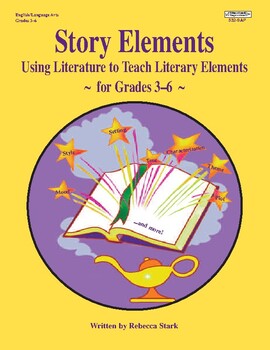
STORY ELEMENTS: Grades 3–6
Using Classic and Modern Literature to Teach Literary ElementsIt is important that students learn to analyze and interpret the literature they read—not only for good results on standardized tests, but also for enjoyment throughout their lives. To get the most out of what they read, they should be able to analyze a work’s literary elements. This book is designed to help students in grades five through eight achieve that goal.Activities help implement Common Core State Standards for English / Lang
Subjects:
Grades:
3rd - 6th
Also included in: ELA Bundle for Grades 3 to 6
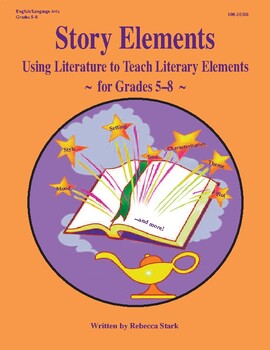
STORY ELEMENTS: Grades 5–8
Using Classic and Modern Literature to Teach Literary ElementsIt is important that students learn to analyze and interpret the literature they read—not only for good results on standardized tests, but also for enjoyment throughout their lives. To get the most out of what they read, they should be able to analyze a work’s literary elements. This book is designed to help students in grades five through eight achieve that goal. Grades 5 through 8.(Figurative Language and Other Literary Devices: Gra
Subjects:
Grades:
5th - 8th
Also included in: Middle-Grade ELA Bundle: Grades 5–8
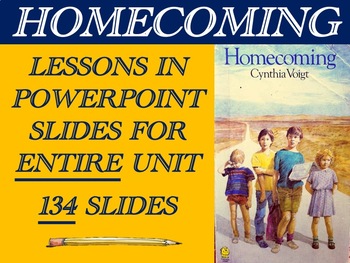
Homecoming Lessons in PowerPoint Slides for Full Unit
This is an entire Unit's worth (one full marking period) of rigorous, colorful, interactive, and engaging daily PowerPoint slides surrounding Cynthia Voigt's Homecoming. ELA Common Core standards are addressed passionately and with purpose – promoting higher-order thinking, inference, and text-to-world connections. Students must be investigators of text throughout this Unit that demands critical analysis and evidence from multiple perspectives.***Please note this resource is designed to be used
Grades:
6th - 9th
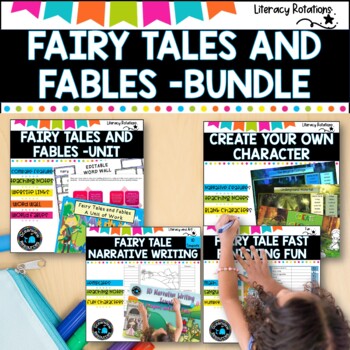
Fairy Tales and Fables - Bundle of Products
This bundle includes my 4 best selling fairy tale and folk themed activities. Read each product description to find out more. Thank you so much for your ongoing support, and be sure to provide feedback to earn TPT credits.
Subjects:
Grades:
K - 6th

Story Elements: Setting
Story Elements is available in two levels: Grades 3 to 6Grades 5 to 8Originally part of Story Elements: Using Literature to Teach Literary Elements, Grades 5–8, this “slice” focuses on Setting. It helps students understand that setting refers to the time and place in which a story takes place and that it includes scenery, weather, clothing, furniture, and other elements. Setting can help set the mood, or atmosphere, of the story. Activities use one or more examples from classic or modern lit
Subjects:
Grades:
4th - 8th
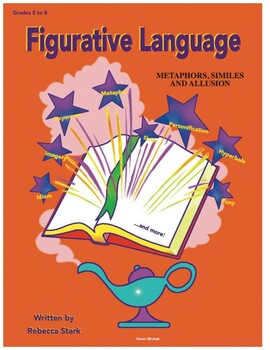
Figurative Language and Other Literary Devices: Metaphors, Similes, and Allusion
Figurative Language and Other Literary Devices is available in two levels: Grades 3 to 6 Grades 5 to 8This slice, which focuses on Metaphors, Similes, and Allusion, is from Figurative Language and Other Literary Devices: Grades 5 to 8.About the complete books:Each edition of Figurative Language and Other Literary Devices uses examples from classic and modern literature to define and illustrate the meanings of literary terms and devices. Students are then given opportunities to identify,
Subjects:
Grades:
4th - 8th
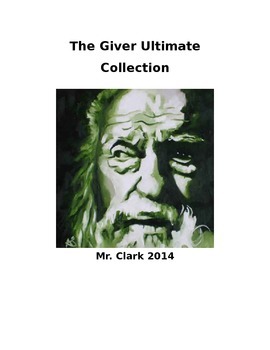
The Giver Ultimate Collection
This product is over 34 pages of Giver related activities, assignments, worksheets, group work with rubrics and other resources to help students interact, engage, and discuss everything related to The Giver!
Subjects:
Grades:
6th - 12th

Figurative Language and Other Literary Devices: Idioms and Puns
Figurative Language and Other Literary Devices is available in two levels: Grades 3 to 6 Grades 5 to 8This slice, which focuses on Idioms and Puns, is from Figurative Language and Other Literary Devices: Grades 5 to 8.About the complete books:Each edition of Figurative Language and Other Literary Devices uses examples from classic and modern literature to define and illustrate the meanings of literary terms and devices. Students are then given opportunities to identify, explain, and use
Subjects:
Grades:
4th - 8th
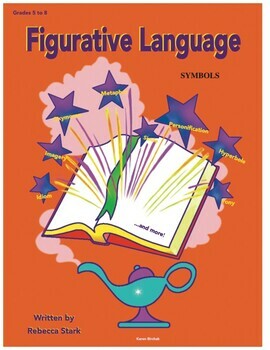
Figurative Language and Other Literary Devices: Symbols
Figurative Language and Other Literary Devices is available in two levels: Grades 3 to 6 Grades 5 to 8This slice, which focuses on Symbols, is from Figurative Language and Other Literary Devices: Grades 5 to 8.About the complete books:Each edition of Figurative Language and Other Literary Devices uses examples from classic and modern literature to define and illustrate the meanings of literary terms and devices. Students are then given opportunities to identify, explain, and use the tech
Subjects:
Grades:
4th - 8th
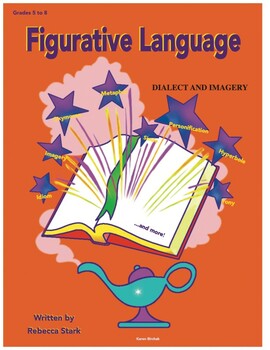
Figurative Language and Other Literary Devices: Dialect and Imagery
Figurative Language and Other Literary Devices is available in two levels: Grades 3 to 6 Grades 5 to 8This slice, which focuses on Dialect and Imagery, is from Figurative Language and Other Literary Devices: Grades 5 to 8.About the complete books:Each edition of Figurative Language and Other Literary Devices uses examples from classic and modern literature to define and illustrate the meanings of literary terms and devices. Students are then given opportunities to identify, explain, and
Subjects:
Grades:
4th - 8th

Story Elements: Tone, Mood and Style
Story Elements: Using Literature to Teach Literary Elements is available in two levels: Story Elements: Grades 3 to 6 Story Elements: Grades 5 to 8Originally part of Story Elements: Grades 5 to 8, this “slice” focuses on Tone, the author’s attitude toward the writing and the readers; Mood, the general atmosphere created by the authors words; and Style. Each element is explained. Then activities are provided that use one or more examples from classic or modern literature. Finally, skill-buildin
Subjects:
Grades:
4th - 7th
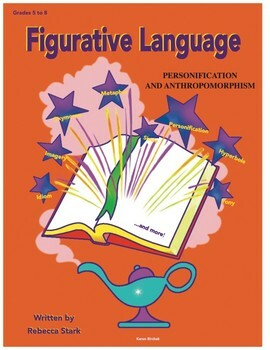
Figurative Language and Other Literary Devices: Oxymora and Paradoxes
Figurative Language and Other Literary Devices is available in two levels: Grades 3 to 6 Grades 5 to 8This slice, which focuses on Oxymora and Paradoxes, is from Figurative Language and Other Literary Devices: Grades 5 to 8.About the complete books:Each edition of Figurative Language and Other Literary Devices uses examples from classic and modern literature to define and illustrate the meanings of literary terms and devices. Students are then given opportunities to identify, explain, an
Subjects:
Grades:
4th - 8th

Story Elements: Introduction
Story Elements: Using Literature to Teach Literary Elements is available in two levels: Story Elements: Grades 3 to 6 Story Elements: Grades 5 to 8Originally part of Story Elements: Grades 5 to 8, this “slice,” which gives a general overview of the various story elements, is from Story Elements: Grades 5 to 8. Definitions and examples are provided; however, the activities targeting the specific elements are not. Included in this “slice” and not in the “slices” focusing on individual elements are
Subjects:
Grades:
4th - 8th

Story Elements: Plot
Story Elements: Using Literature to Teach Literary Elements is available in two levels: Story Elements: Grades 3 to 6 Story Elements: Grades 5 to 8Originally part of Story Elements: Grades 5 to 8, this “slice” focuses on Plot. The activities help students understand the elements of plot: conflict, foreshadowing, flashback and resolution. Each element is defined and explained. Then activities are provided that use one or more examples from classic or modern literature. Finally, skill-building ac
Subjects:
Grades:
4th - 8th
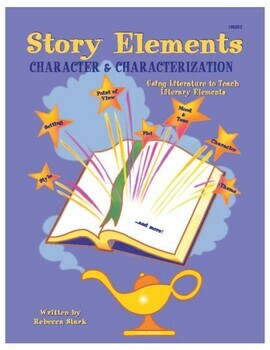
Story Elements: Character and Characterization
Story Elements: Using Literature to Teach Literary Elements is available in two levels: Story Elements: Grades 3 to 6 Story Elements: Grades 5 to 8This “slice,” which focuses on Character and Characterization, is from the 5 through 8 version. The activities help students understand protagonists and antagonists; static, flat or dynamic characters; stereotypes; and well-rounded characters. Activities are provided that use one or more examples from classic or modern literature. Finally, ski
Subjects:
Grades:
4th - 8th
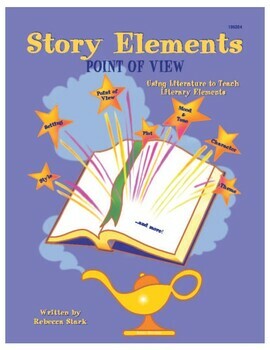
Story Elements: Point of View
Story Elements: Using Literature to Teach Literary Elements is available in two levels: Story Elements: Grades 3 to 6 Story Elements: Grades 5 to 8Originally part of Story Elements: Grades 5 to 8, this “slice” focuses on Point of View. The element is explained. Then activities are provided that use one or more examples from classic or modern literature. Finally, skill-building activities based on that story element are provided. CCSS Analyze how particular elements of a story or drama interact.A
Subjects:
Grades:
4th - 8th
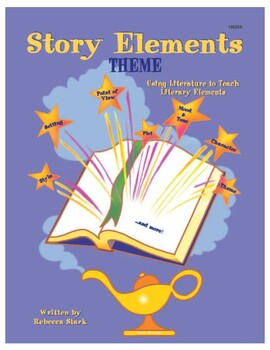
Story Elements: Theme
Story Elements: Using Literature to Teach Literary Elements is available in two levels: Story Elements: Grades 3 to 6 Story Elements: Grades 5 to 8Originally part of Story Elements: Grades 5 to 8, this “slice” focuses on Theme, the general idea or point of a story. Students learn that theme is the author’s expressed or implied opinion about a subject. Then activities are provided that use one or more examples from classic or modern literature. Finally, skill-building activities based on that st
Subjects:
Grades:
4th - 8th

Figurative Language and Other Literary Devices: Literary Devices (General)
Figurative Language and Other Literary Devices is available in two levels: Grades 3 to 6 Grades 5 to 8This slice, which provides an overview of literary devices, is from Figurative Language and Other Literary Devices: Grades 5 to 8.About the complete books:Each edition of Figurative Language and Other Literary Devices uses examples from classic and modern literature to define and illustrate the meanings of literary terms and devices. Students are then given opportunities to identify, exp
Subjects:
Grades:
4th - 8th
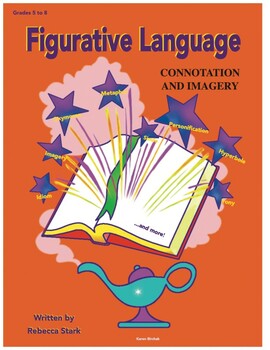
Figurative Language and Other Literary Devices: Connotation and Dialogue
Figurative Language and Other Literary Devices is available in two levels: Grades 3 to 6 Grades 5 to 8This slice, which focuses on Connotation and Dialogue, is from Figurative Language & Other Literary Devices, Grades 5–8.About the complete books:Each edition of Figurative Language and Other Literary Devices uses examples from classic and modern literature to define and illustrate the meanings of literary terms and devices. Students are then given opportunities to identify, explain,
Subjects:
Grades:
4th - 8th
Showing 1-24 of 28 results


